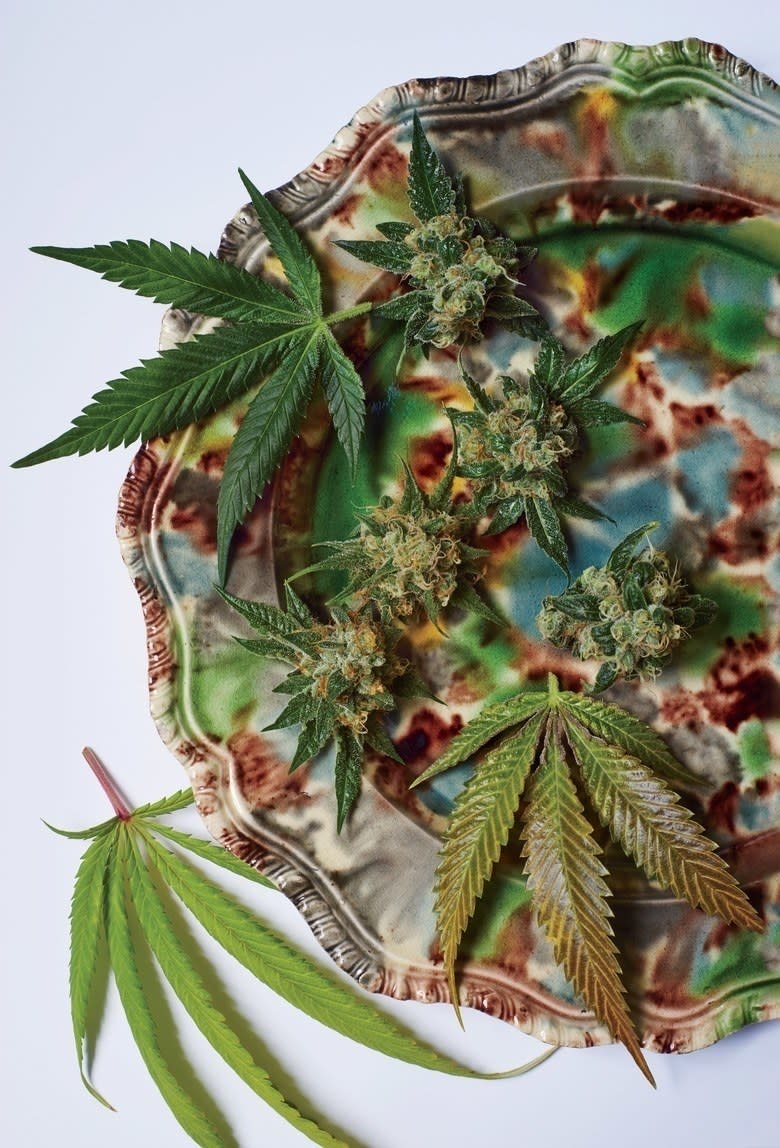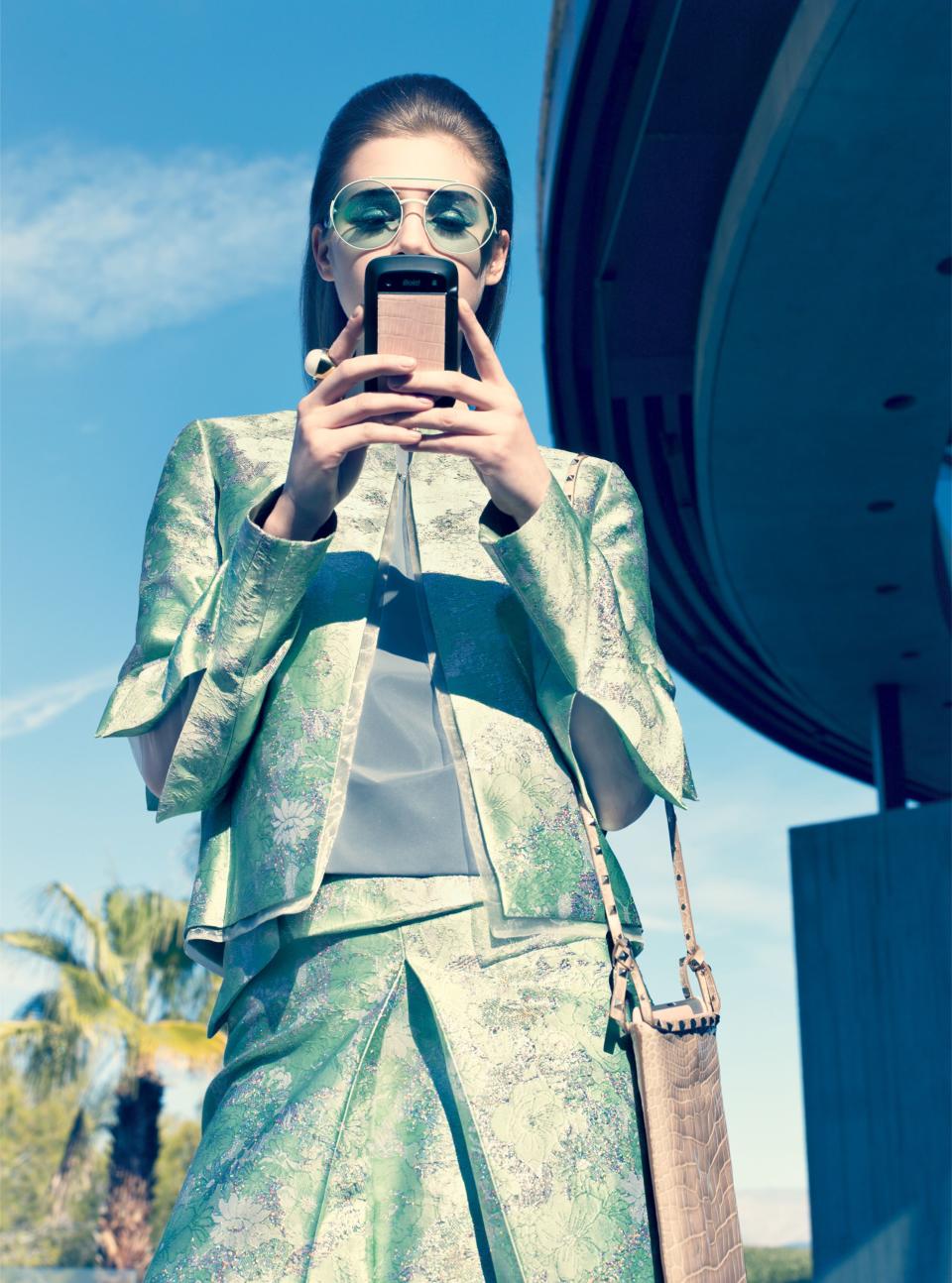The 6 Biggest Skin-Care Breakthroughs of 2018
Technology and science, the engines that propel the skin-care industry, are both moving faster than ever. This year, new treatments, gadgets, and beauty products arrived at a fevered clip. Some, no doubt, are fated for the novelty aisle. Others, however, have revolutionary potential.
Here, today’s innovations—from the cutting edge to the downright practical—that just might become tomorrow’s benchmarks.

CBD-Infused Beauty Products
This year’s breakout star in the wellness space also made considerable inroads in skin care thanks to a raft of new products touting everything from anti-aging benefits to eczema relief. A chemical compound typically derived from hemp, CBD, short for cannabidiol, won’t usually get you high, but it will target the troublesome trifecta of acne, aging signs, and chronic dryness—at least according to recent studies that cite its various effects on the endocannabinoid system, which plays a regulatory role in functions like hormone balance and immunity. Of course, legitimization of its palliative properties (thanks partly to its recent FDA coup), along with the expanded legalization of its cousin marijuana, has made CBD something of the panacea du jour, and cynics note the marketability boon that comes with adding its name to virtually any ingredient list. Still, proponents argue it’s got staying power. “I actually just left a dinner hosted by an investment firm interested in CBD skin care,” says Shen Beauty’s Jessica Richards over the phone from inside an Uber. “I think the industry is only going to grow.”

The Rise of Customized Skin Care
From data-harvesting programs to facial recognition apps, brands are harnessing new technologies to create individualized skin care on a mass scale. 2018 saw the launch of a range of new customized lines, from niche to mainstream, most notably Clinique iD, which features mix-and-match formulas of moisturizers and actives. Then there’s SkinCeuticals’s new Custom D.O.S.E. machine (available at 22 dermatology offices across the country and counting), which targets hyperpigmentation and signs of aging by sifting through thousands of algorithms to determine, devise, and dispense the perfect corrective serum for you. No doubt, in an era when everything from our Netflix account to our coffee order is an exercise in personalization, tailor-made skin care is smart business. But with multiple skin types and countless lifestyle and environmental variables, it’s also plain smart.

The Fight Against Blue-Light Pollution
We already know that screen time can be detrimental to our health. Now we’re learning it might also wreak havoc on our skin. Prolonged exposure to blue light, or high-energy visible light (HEV), emitted from digital devices is giving many experts reason for concern. “It can cause color changes [in the skin], inflammation, and weakening of the skin surface, as well as evidence of photo-aging,” says New York City dermatologist Dr. Patricia Wexler, M.D. Fortunately, 2018 brought a wave of HEV-blocking products to save us from our smartphone-addicted selves. Some, like Coola’s new 360° Sun Silk Drops, which Wexler recommends, contain Liposhield, the first cosmetic ingredient specifically formulated to protect against HEV rays. Others rely on broad-spectrum coverage provided by compounds like zinc oxide or titanium dioxide. With the average American currently clocking in an estimated 10.5 hours of screen time a day, this fledgling category is poised for growth.

LED Therapy x Topical Cosmetics
This summer, New York dermatologist Ellen Marmur debuted her game-changing Marmur Metamorphosis regimen. “Why not take cosmetic skin care up a few exponential notches?” she says of the process, which hinges on an LED, or light-emitting diode, therapy device (like the MMSphere, due out in the spring) and next-gen hydrogel sheet masks (available now). Both work well on their own, but when used in tandem, the LED activates photodynamic ingredients like collagen-boosting tara tree and DNA-repairing blue-green algae, turbocharging their performance. Skin-care experts like Los Angeles facialist Shani Darden already combine LED therapy with products to enhance the latter’s efficacy (Darden’s partial to hyaluronic acid), but Marmur may be the first to devise formulas with the technology in mind—and we have a hunch she won’t be the last.

Hair Care Is All About Scalp Health
In the world of skin care, it could be said that 2018 was the year of the scalp. There was the New York flagship opening of Harklinikken, a Copenhagen-based hair loss clinic which contends that issues like irritation, dryness, and product buildup trigger shedding and impede regrowth. There was also the launch of standout hair-care lines that put a premium on scalp wellness, like the science-backed RevitaLash and the natural Act + Acre. But perhaps most importantly, there was a perspective shift within the industry itself, a tacit but collective understanding that a healthy scalp has everything to do with a good hair day. What prompted it? The ever-growing body of research? The efficacy of products like scalp exfoliators and pH-balancing shampoos? It’s hard to say, but it’s a step in the right direction.

Sun Protection Goes High Tech
A nifty little gadget with industry-disrupting potential, the My Skin Track UV device is a solar-powered clip-on you affix to your collar (or pocket or sleeve) that measures UV exposure. Launched just last month, it’s the brainchild of French skin-care label La Roche-Posay and wearables guru John Rogers, while its sleek, unobtrusive look is the work of noted Swiss industrial designer Yves Béhar. Intended to keep users informed on the amount of harmful UVA and UVB rays they receive in real time—and ideally prompt them to slather on more sunscreen, the device is the first wearable with a focus on skin care and, hopefully, the forerunner of more to come.



